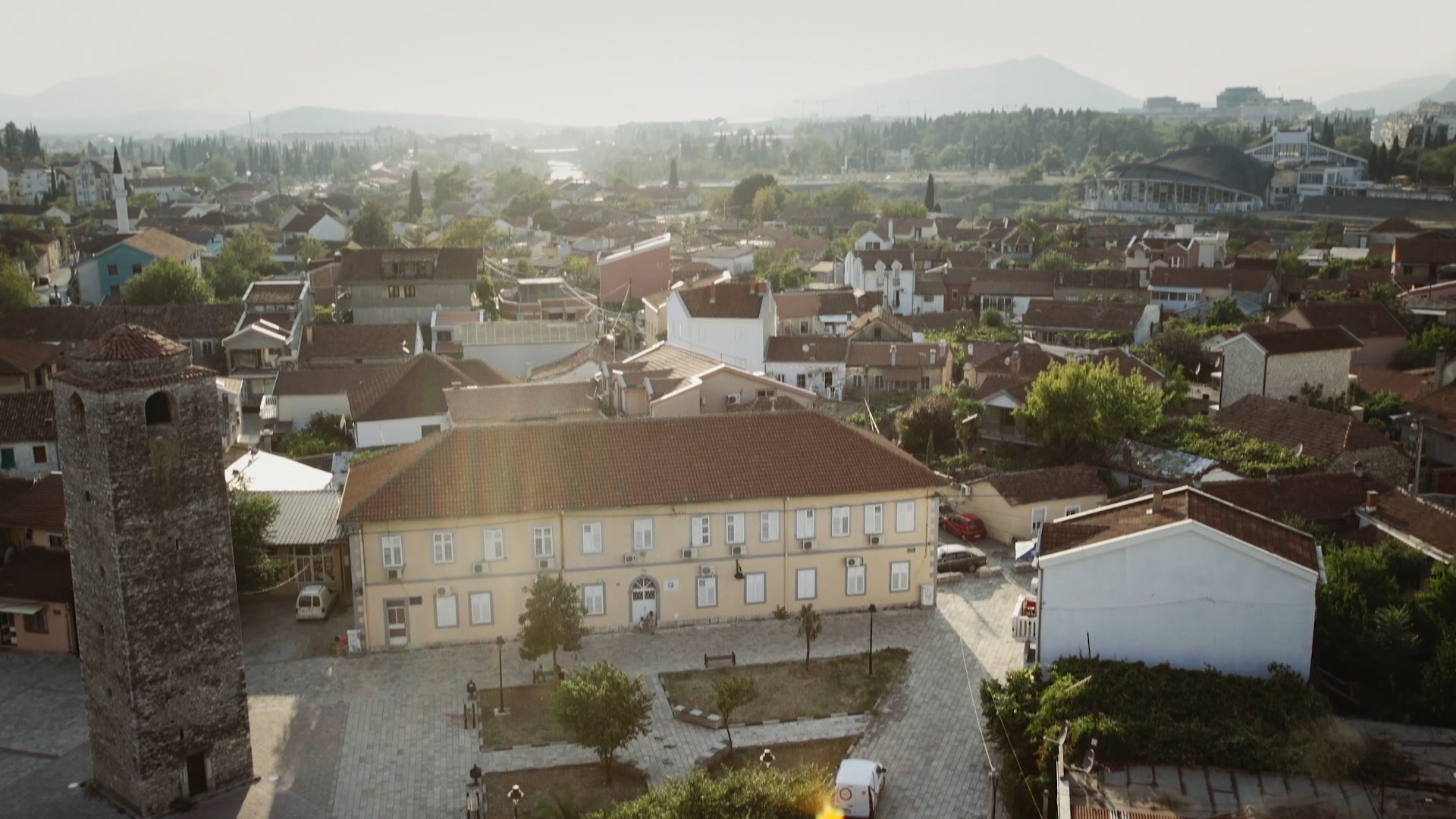HISTORY OF PODGORICE
Through The Centuries
Podgorica is situated at the crossroad of few important road directions, which go along the vale of River Zeta, River Moraca and River Cijevna, at the basin of Skadar Lake and near Adriatic Sea, in fertile flat ground with favourable climate conditions. This area was suitable for settlements construction even in the past times, so there were settlements here yet in the prehistory. The oldest remains of material culture in this area belong to the earlier stone age. By further development, organized human settlements appeared which will survive many happenings.

During the Illyrian era, two Illyrian tribes Labeati and Dokleati lived at the area of Zeta-Bjelopavlici valley, and they had a direct influence on settlements appearance of this place. Labeati lived at the area from Skadar to Podgorica nowadays. They had their fortress called Meteon, today’s Medun, and quite developed organization of life, specially army. Docleati lived at the vale of River Zeta, and therefore, thanks to the fertile flat ground and favourable geographical and traffic position, there was a fast economic development. Town-planning, Doclea was adopted to the configuration of the ground. That was a big city in those times, with 8 – 10 thousand inhabitants, where all communal issues were solved. Relatively high population density, at the territory with something more than ten kilometers in diameter, appeared as a result of geographical position, favourable climate and economic conditions and safety position, what was of great significance for those times.
From 5th century, by arrival of first Slovene and Avar tribes, and by beginning of Roman empire collapse, many important happenings took place at these parts. Instead of earlier fortresses new towns appeared. Doclea is demolished. Migrating Slovene groups, in continuous battles with Byzantine, wanted to establish a new state. In all those ferments a new settlement – Ribnica appeared, which got the name, probably, after River Ribnica where it was founded. The first mentioning of Ribnica is connected with the period of Nemanjic. Traffic importance of Ribnica was stipulated by geographical position, as a crossroad of main road directions, through which the connection of these parts with the Western countries was kept. When finally settled in these parts, Slovene began to develope their own culture and art. That was a culture which suited Middle Age church and feudal class. The name Podgorica is mentioned 1326 for the first time in one legal document in Kotor archive. Podgorica, former Ribnica, was economically strong. Commercial connections between Dubrovnic and the state of Nemanjic, which were very developed, were kept by the road that went to Podgorica through Trebinje and Niksic. As it was situated at the most frequent crossroad, Podgorica was a centre of very vivid turnover, merchants, messengers and other travelers, what represents its development, economic power, army force and strategic significance. By Turkish occupation 1474, the economic, cultural and art growth of the city was stopped. Turkish built a big fortress, and they transformed earlier settlement with very developed commercial connections into a main defensive and attacking bastion towards mutinous tribes. From such a fortified town, with towers, gates and defensive walls, Turkish resisted all attacks.
Following the decision of Berlin Congress 1878, Podgorica was united to Montenegro. That was the end of four century Ottoman occupation and the beginning of new era of Podgorica and Montenegro development. The city was developing quite fast and grew up into a strong market. The first forms of capital concentration appeared, and 1904 the first important financial institution was established called Savings of Zeta, which will very soon become the Bank of Podgorica. The roads towards all surrounding towns are constructed, and 1902, the first important economic company – Tabacco factory was established in Podgorica.
In the period between two wars, Podgorica had about 13 000 inhabitants. In the II World War it was bombarded more than 70 times and it was totally destroyed. There were about 4100 victims, and it was liberated December 19th 1944.
By the name Tiotograd, it became the Capital of the Republic July 13th 1946. It was the beginning of new life. In the next period there was a general transformation of the city. Material, professional, scientific-technical potentials were increased, education was strongly developed, many new health and cultural institutions were established, and the city is connected with all the country and abroad by modern roads and air traffic. So Titograd becomes business, social-economic and cultural centre of Montenegro.
The name Podgorica was returned April 2nd 1992.
Doclea
Town Doclea is situated about three kilometers North-West from today’s Podgorica, at the flat plateau between River Zeta and River Morača. For those times that was a big town with 8-10 thousand inhabitants and with complete communal infrastructure: water supply, sewage system and roads.
Roman ruling in Doclea was strengthen at the I century, when the town was conquered by Roman legions, after long battles with Illyrians. It was rapidly raised by Romans, and consequently it soon became political, cultural and religious centre of Prevalis province, with the municipal rights, what significantly made an influence on inhabitants structure changing as well as on social-economic relations. Migration of new inhabitants means the opening of the town, specially towards Adriatic coast.
The commercial connections are developed with Italy, Dalmatia and East region, and later with Macedonia and Greece.
At the beginning of VI century, there was a terrible earthquake in Doclea, and in 609 the town was rifled and destroyed again by Avars and Slovenes. It is being mentioned for a long time, but yet from the 10th century instead of the old name a new one Zeta appeared more often.

Medun
The old city Medun (Meteon), higher fortification situated 13 kilometers North-East from Podgorica belongs to the ancient period. It was first built as a fortress and later as a city between IV and III century BC. Well preserved fortification walls were constructed by big blocks of dressed stones, set in files. The construction very much differs from other less important Illyric towns, by steadiness and proportionality.
From the cultural-artistic point of view, two lower burials in the rock on the way from lower town to the upper one are very interesting. Research came to the conclusion that the performed rituals are connected with the cult of snake, which represented mythical ancestor to Illyrians. At the North part of the upper town there is a necropolis. It belongs to the Illyrian period, but it has not been studied yet.
Roman legions conquered Medun around the year 167. In that occasion, the last Illyrian king Gentie and his family were captured.
Medun has not been still studied enough. Apart from that it is very interesting for long and rich history, the town represents the object of great importance for studying all cultural ages from prehistory to Middle Age.
At the foot of this town and fortification walls, our famous writer, tribes head, Montenegrin duke and hero Marko Miljanov lived. He was also berried at the acropolis in front of the small church.

